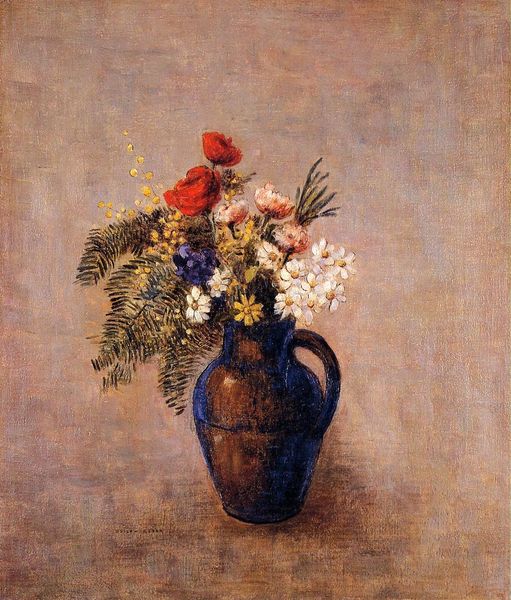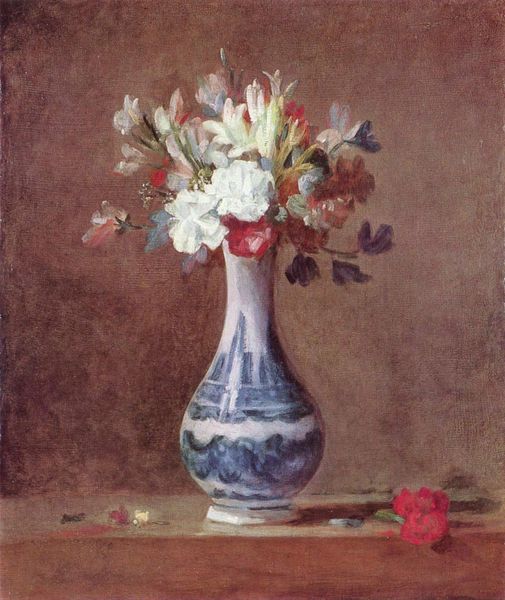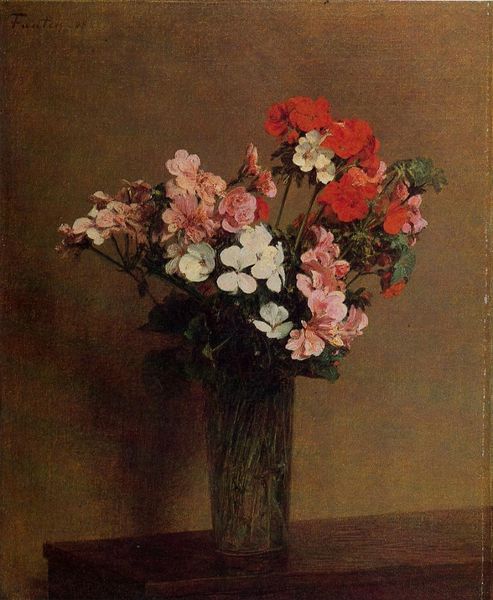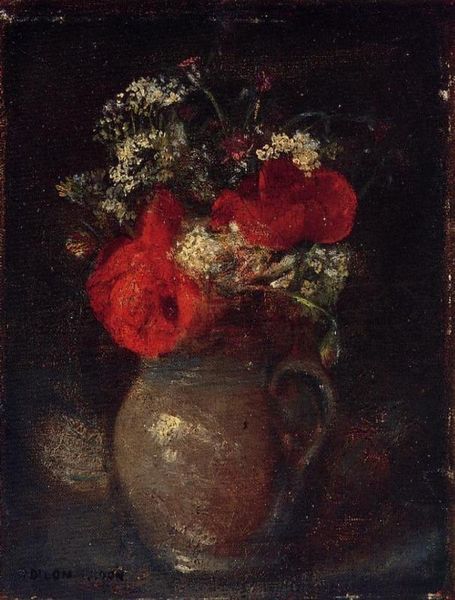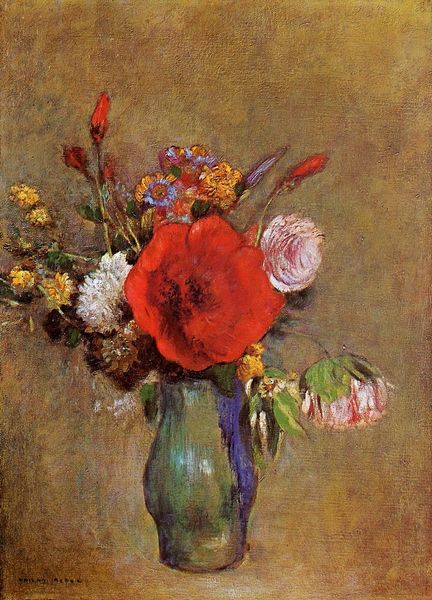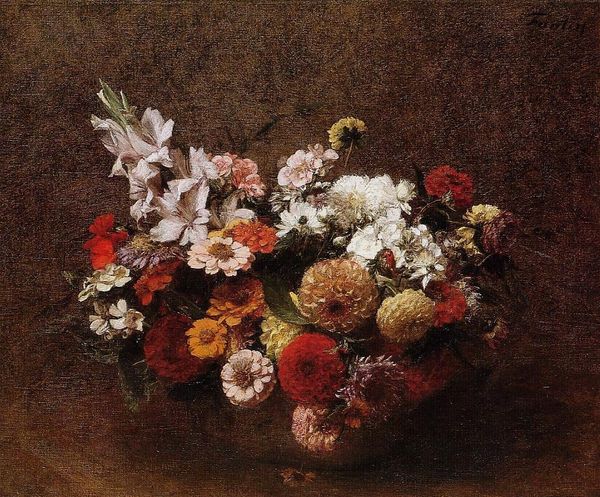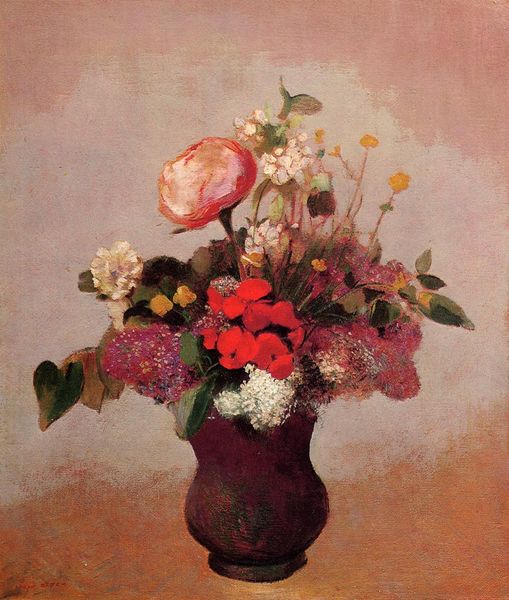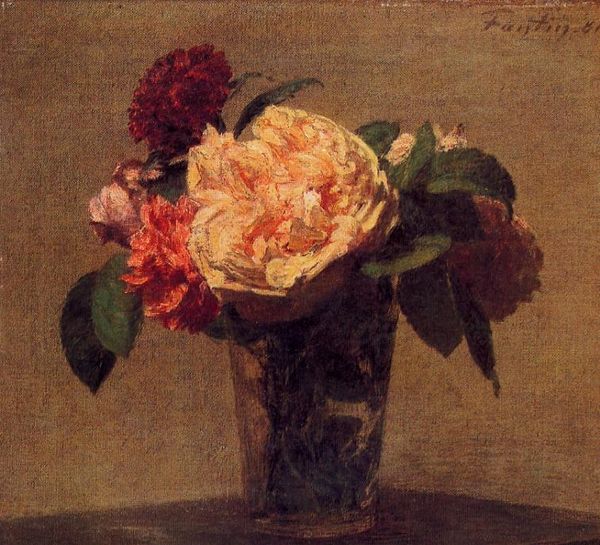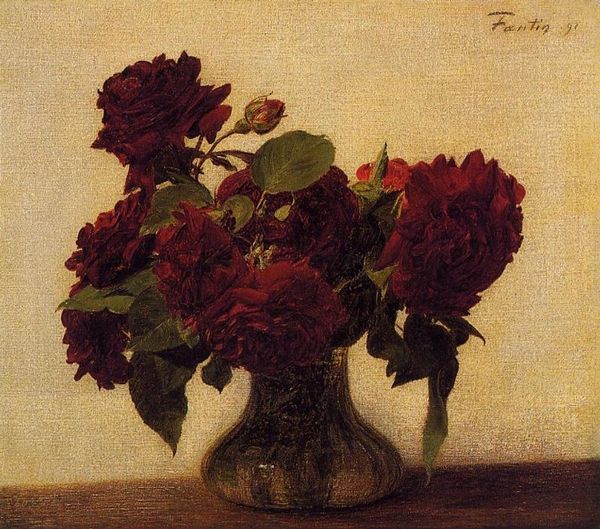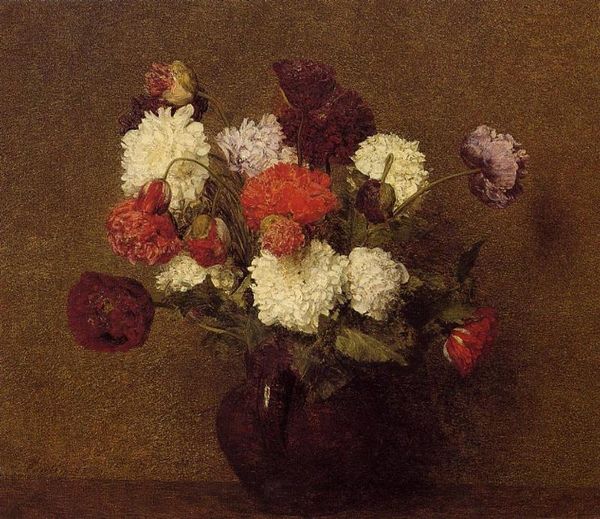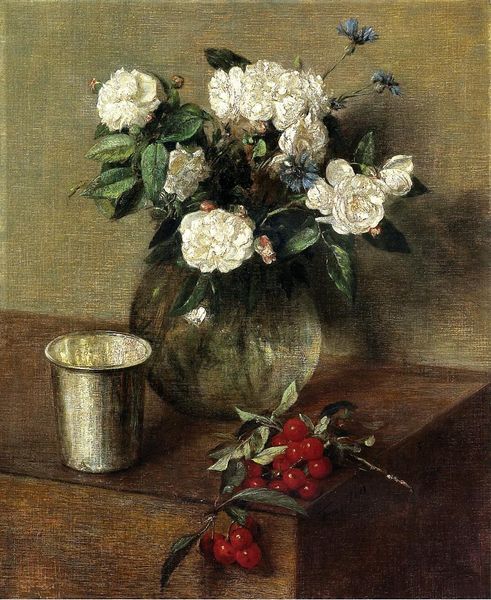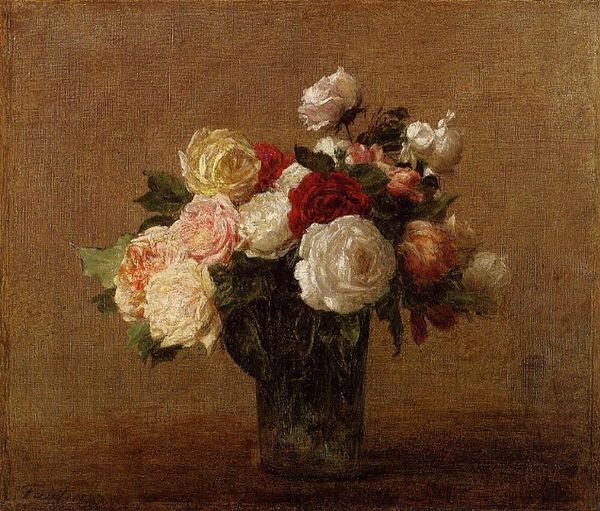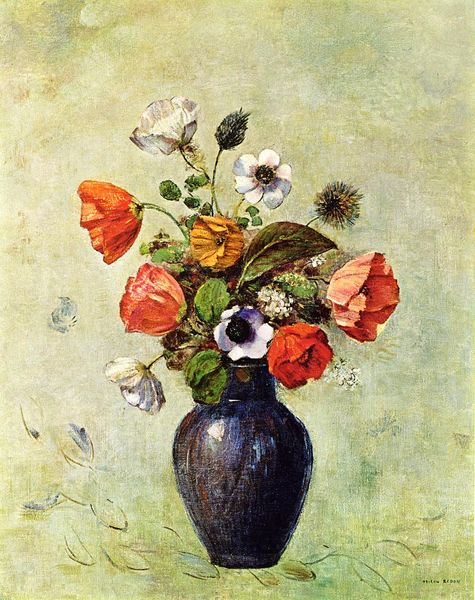
painting, oil-paint, impasto
#
still-life
#
gouache
#
water colours
#
painting
#
oil-paint
#
flower
#
impasto
#
intimism
#
romanticism
#
symbolism
#
mixed media
#
watercolor
Copyright: Public domain
Curator: We’re looking at "Carnations and Baby's Breath in a Green Pitcher" by Odilon Redon, held in a Private Collection. Editor: It's striking, almost severe. The colours are rich, but muted. It has an old master feel despite the composition seeming less… posed. There is some kind of mixed media application. Curator: That severe elegance touches on the symbolism prevalent in Redon’s work. The specific species become relevant: Carnations often signal deep affection or love, but here, muted as you pointed out. And Baby’s Breath adds fragility, which altogether casts the work within themes of ephemeral beauty and sentimental symbolism so vital to late 19th-century identity. Editor: And note the layering of the oil paint itself! Impasto creates a depth and a physicality that draws our attention not just to WHAT is depicted but to HOW. I’d be keen to learn where the paint and the vessel were manufactured. We see the contrast between the floral delicacy and the rough-hewn surface. Was it common in Redon's social milieu to contrast delicacy and roughness? Curator: I would wager that the juxtaposition of fragility against resilience can be interpreted in terms of a feminist framework. Floral displays, during the fin de siècle, became entwined with ideas about idealized femininity: domesticity, decoration, perhaps stifled creative aspirations, especially amongst bourgeoise women. Redon knew this, and in subtle but pointed ways interrogated societal tropes with layered technique, not just as aesthetic exercise. Editor: So we have something lovely, that can stand on its own, which is further made complex because it emerges from certain class and gender constraints—not divorced from production and market. Curator: Precisely. And those market forces have continued to inform who had the power to produce art in that period, and who can afford these works today. The continued commodification of intimism poses relevant questions of social and historical importance to cultural theorists now. Editor: Indeed, and focusing our examination on how those forces manifest physically—brushstroke, composition, and availability—is just one method of approach. Curator: A necessary approach. It all adds layers of meaning that make what initially appeared as a simple still life into a far more loaded and meaningful reflection on society.
Comments
No comments
Be the first to comment and join the conversation on the ultimate creative platform.
